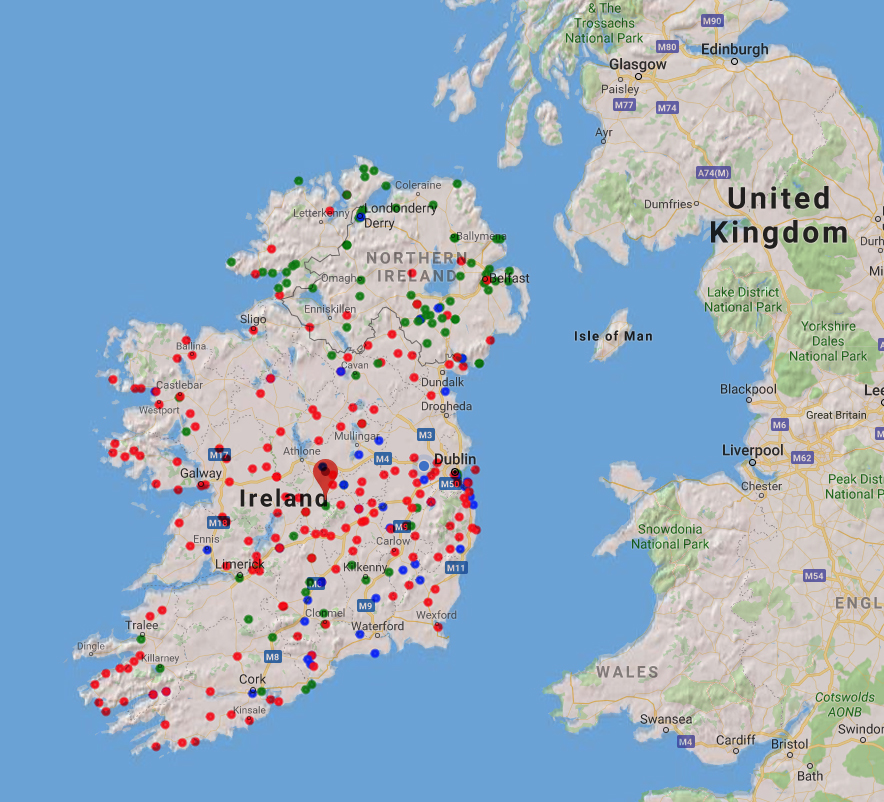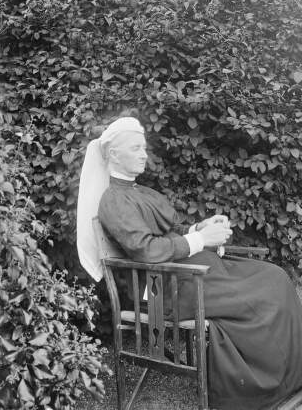
The biographies of women who worked in the Irish War Hospital Supply Organisation are a major research interest of the Letters 1916-1923 team, and we need your help in uncovering these forgotten stories. Last week, we asked for your help in finding out more about Eleanor (Bruce) Dallas Pratt, who served as Honorary Secretary in the Irish War Hospital Supply Depot in Dublin. According to the final report published in 1919, this depot had more than eighty sub-depots across the country, and women played a vital role in their day-to-day management. Local work parties produced all kinds of medical and surgical supplies from papier-maché artificial limbs to bandages, but sphagnum moss wound dressings were perhaps the most important item shipped from Ireland. Sphagnum moss was sourced in several parts of the British Empire, including Scotland and Canada, because it served as a cheap and widely available replacement for cotton cloth, which ran short during the First World War. Moss collection for medical purposes was introduced to Ireland in autumn 1915 and soon professionalised. Many volunteers (above all women and children) contributed to the time-consuming work.
Locating places of medical supply production in Ireland
Contemporary maps and the various reports published by the War Hospital Supply Organisation in Dublin give us an impression how wide-spread and well-organised the production of all medical supplies was. University College Dublin have published an early twentieth-century map of Irish sphagnum moss depots on their website. Other work parties and regional depots are mentioned in reports held by the National Library of Ireland and in a list of British war hospital supply depots assembled by Sue Light. Based on these data, we have created a zoomable map of Ireland which highlights general war hospital supply depots (green), sphagnum moss depots (blue) and local work parties (marked in red, activities not always specified).

These centres were active at different times between 1916 and 1919, and we appreciate your support in researching their development. Tracing depots and work parties can be challenging because estate and town names may have changed, or because Irish place names were spelled inconsistently in the sources. The 325 nodes we have identified so far were mainly situated on the Irish coast or on major transportation routes (e.g. the Royal Canal and railway lines). Dublin and Belfast were the most important harbours for the shipping of all war hospital supplies to the British army and allied organisations such as the Anglo-Belgian Committee of the Belgian Red Cross. At least sixteen places (marked in yellow) functioned both as sphagnum moss and general supply depots.
In recent years, Dr. Clara Cullen (UCD Library) has already conducted extensive research in the overall organisation of sphagnum moss collection and processing in Ireland, but little is known about individual volunteers. Therefore, we need to rely on hints in private letters to reconstruct the social networks and motivations of women who dedicated their time and energy to this demanding work on the home front.

Lady Clonbrock and the sphagnum moss collection in County Galway
One collection of letters in the the Letters 1916-1923 database that contains such hints is the correspondence of Augusta Caroline Dillon, Lady Clonbrock. This correspondence includes three letters relating to the efforts of Lady Clonbrock and her female acquaintances to establish a sphagnum moss sub-depot in County Galway. The original letters are now in the possession of the National Library of Ireland but have been photographed and transcribed for our project. If you know more about women who worked as moss collectors or elsewhere in the Irish war hospital supply system, please share your stories with us. With your help, we are hoping to bring some of the uncredited achievements of Irish women to the attention of the public.
Further reading:
Cullen, Clara. ‘War Work on the Home Front: The Central Sphagnum Depot for Ireland at the Royal College of Science for Ireland, 1915-1919’. In Medicine, Health and Irish Experiences of Conflict, 1914-45, edited by David Durnin and Ian Miller, 155–70. Manchester: Manchester University Press, 2017.
Irish War Hospital Supply Organisation. Third Annual Report of the Sphagnum Department of the Irish War Hospital Supply Organisation. Dublin: Thom, 1919.
Reilly, Eileen. ‘Women and Voluntary War Work’. In Ireland and the Great War: ‘A War to Unite Us All’?, edited by Adrian Gregory and Senia Paseta, 49–72. Manchester: Manchester University Press, 2002.